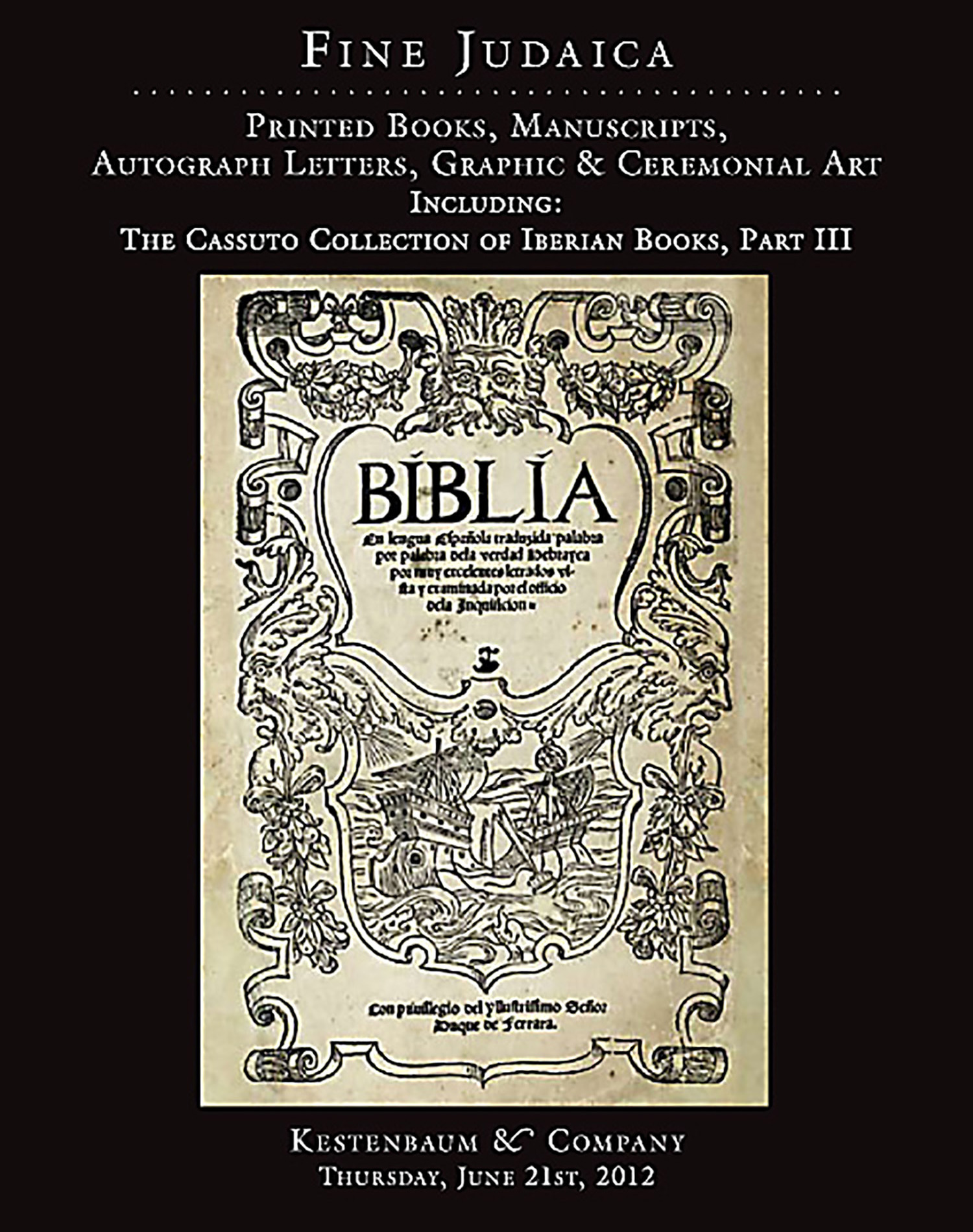Megilath Setarim. * Chibur Yaphah MeHayeshuah.

AUCTION 55 |
Thursday, June 21st,
2012 at 1:00
Fine Judaica: Printed Books, Manuscripts Autograph Letters, Graphic & Ceremonial Art
Lot 281
NISSIM GAON.
Megilath Setarim. * Chibur Yaphah MeHayeshuah.
Yemen: (1017)
Est: $20,000 - $25,000
PRICE REALIZED $16,500
Provenance: From the Library of Rabbi Joseph Kafah.
Rav Nissim Gaon (990-1062) was the outstanding Talmudist in North Africa. He studied at the Kairouan yeshiva (present-day Tunisia), initially under his father, Jacob ben Nissim (“Rav Yaakov Gaon,”) who had studied in turn, under Hai Gaon. Rav Nissim maintained an active correspondence with Hai Gaon and with Shmuel Hanagid, whose son Joseph married Nissim’s only daughter. As the former was in Bavel (Babylonia) and the latter was in Sferad (“Spain,”) Rav Nissim is also credited with having maintained through his letters the lines of Rabbinic discourse between these easternmost and westernmost Jewish communities. His most famous student is R. Isaac Alfasi (the “Rif”.)
The Megilath Setarim is one of Rav Nissim Gaon’s most frequently cited works. It contains comments in almost all subjects concerning halachic decisions, as well as midrashim. The present manuscript of the work contains materials that exist in no other copy.
The discovery of a subject index in the Cairo Genizah has made it possible to more precisely identify otherwise anonymous manuscripts as having been composed by R. Nissim Gaon. Professor Shraga Abramson devoted a lifetime of labor identifying R. Nissim’s works from early manuscripts, eventually publishing his monumental work: “Rav Nissim Gaon” (Jerusalem 1965.) The present Kapach manuscript was described and dated by Prof. Abramson on p. 201 and p. 203 of his work. See also p. 317, where he notes having discovered in Cambridge University’s Genizah Collection two fragments which he surmised were from Rav Nissim Gaon. He goes on to thank Rabbi Kafah “who was kind enough to allow me to use his manuscript where these two simanim are entirely complete.”
See also EJ Vol. XII. cols. 1183-84.
